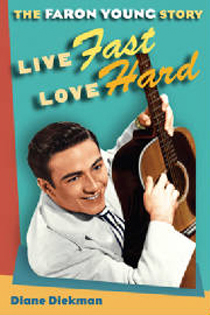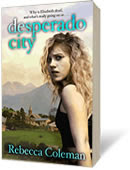
Cogito ergo sum. "I think therefore I am," so says Descartes.
'Thinkers' conclude that this little sentence separates humans from animals. It has to do with problem solving. But my cat thinks and he certainly solves problems.
He thinks about how to keep his litter box clean. Then he proceeds to clean up after our two other felines, scratching and covering, smoothing and mounding, until odor is gone, all is neatly covered, and the problem is solved. He has mastered the art of stealing my ink pens and hiding them under the rug. He even takes joy in watching my husband step on said hidden ink pens in his bare feet and then yelling and hobbling around like some one-legged wildebeest. (Yes, I believe cats also have a sense of humor.)
My cat also thinks about thumping me on the head with his paw in the middle of the night so that I will wake up and scratch his itch. In that respect, he has me totally trained. Thump, scratch. Thump, scratch.
He thinks about catching bugs and lizards. I think that makes him as much of a thinker as many humans I know. The one aspect of life he seems to constantly bump up against and hasn't mastered is gravity. But, like all cats I've known, even fighting against gravity -- he lands on his feet.
Most humans can't do that.
So what is it about problem solving and thinking that makes humans feel elevated above other species? I pondered this and realized that it is the unrelated elements that come together into a new thought that might be the dividing point between species.
And, I believe that women have conquered that Everest, while men are still at base camp. Men even admit that they can't figure out how women think. And have you noticed that most of the scientific data has been gathered on MALE subjects? Descartes should have listened more to his wife. He would have seen real problem solving in action.
What s
 ent me onto this topic was an obsession of mine: Diana Gabaldon and her Outlander series. Now bear with me. Diana has come up with a name for her newest book in that series. So far the names are: Outlander (duh), Dragonfly in Amber, Voyager, Drums of Autumn, The Fiery Cross, and A Breath of Snow and Ashes. All wonderful titles of which I do not know the thought process nor the origins. But the next book's title, that one I have seen explained in her email to the CompuServe book group. It beautifully reveals her thought process.
ent me onto this topic was an obsession of mine: Diana Gabaldon and her Outlander series. Now bear with me. Diana has come up with a name for her newest book in that series. So far the names are: Outlander (duh), Dragonfly in Amber, Voyager, Drums of Autumn, The Fiery Cross, and A Breath of Snow and Ashes. All wonderful titles of which I do not know the thought process nor the origins. But the next book's title, that one I have seen explained in her email to the CompuServe book group. It beautifully reveals her thought process.In a nutshell, she and hubby are sandwiched together on a plane flying to a book-related engagement in Alaska. Gabaldon writes, "I was thinking about the shape of the book (of which I have a vague approximation, but not firm at all, yet), and generally considering it in abstract visual terms (i.e., not 'visual' as in thinking of incidents....but rather the pattern that emerges from them)."
You can see why her books are a gazillion pages long -- her emails are not word thrifty and obviously her thoughts aren't either.
Anyway, she sees pebbles dropped into water forming ripples. (If you read her books, this actually makes sense.)
Ripples which rhyme with nipples doesn't seem like a title of choice and pebble might bring the similar ripple, nipple concept to mind. So she keeps thinking of ripples, which she admits makes her think of lakes, which leads to water which leads to waves.
Which makes her think of Loch Ness and standing waves, which she explains is "one suggestion as to the origin of the Loch Ness monster; i.e., that people saw a standing wave--which occur frequently in the loch--and assumed it to be the back of a sea monster."
She, bless her heart, even includes a definition of standing wave: "A type of wave in which the surface oscillates vertically between fixed nodes, without any forward progression; the crest at one moment becomes the trough at the next. Standing waves may be caused by the meeting of two similar wave groups that are traveling in opposing directions."
Running the idea of 'Standing Waves" past her dear husband, his response was to hold his nose. So she continued her musings. Reverting back to ripples and waves, she investigates various wave forms and arrived at 'echo.'
- the repetition of a sound by reflection of sound waves from a surface
- a sound so produced
- any repetition or imitation of the words, style, ideas, etc. of another
- a person who thus repeats or imitates
- sympathetic response
- Electronics a radar wave reflected from an object, appearing as a spot of light on a radarscope
- Gr. Myth. a nymph who, because of her unreturned love for Narcissus, pines away until only her voice remains
- Music
- a soft repetition of a phrase
- an organ stop for producing the effect of echo
- Radio, TV the reception of two similar and almost simultaneous signals because one of them has been delayed slightly by reflection from the E layer in transmission
"Well, all _righty_, then," she thought. "Echo is a much more evocative word than 'ripple,' and has multiple related definitions, virtually all of which might apply to the metaphorical levels of this book. Cool. I like 'echo.'"
I freely admit here that I probably would have stopped my own problem solving at ripples. Who cares if it reminds anyone of nipples....Over the course of several days the author mulled over the title concept, drew on some of her own writings and came up with "Echo in the Flesh."
The repetition of the "O" sound in Echo and Bone was pleasing and mimics
 the U in Drums of Autumn vowel repetition. After trying it out on agent, editors, and a couple rooms full of people, she decided she had her title.
the U in Drums of Autumn vowel repetition. After trying it out on agent, editors, and a couple rooms full of people, she decided she had her title.I don't think my cat could have done this, but he might have thumped me on the head until he got me to do it.
I wonder if Gabaldon has a cat.
























